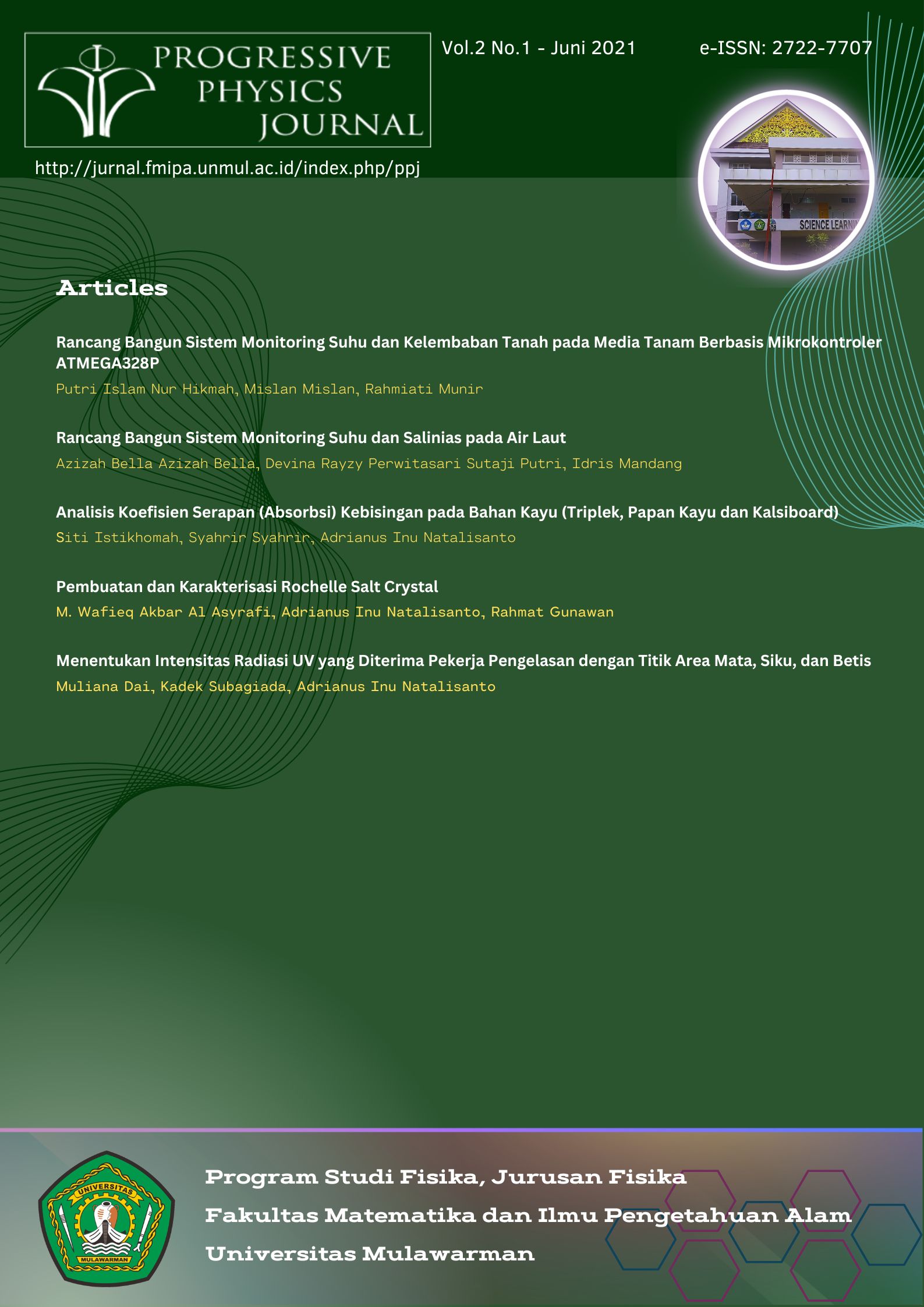Rancang Bangun Sistem Monitoring Suhu dan Salinias pada Air Laut
DOI:
https://doi.org/10.30872/ppj.v2i1.767Keywords:
Salinity, Temperature, VoltageAbstract
Knowing the condition of the waters is very important for the sustainability of aquatic ecosystems. The condition of the waters so as not to have a bad impact on aquatic ecosystems can be known through temperature and salinity parameters. Seawater temperature is the distribution of heat in the ocean caused by the movement of water and other factors. The salinity of seawater is the level of saltiness or the level of salt dissolved in seawater. Temperature can be measured using a thermometer and salinity is measured using a refractometer. However, using these tools requires time, effort, cost, and manual data retrieval processes. Therefore, this research aims to make a temperature and salinity measuring instrument and determine the relationship between Voltage and salinity in the seawater. This research used the method of measuring electrical conductivity (DHL) to determine a change in magnitude. The temperature and salinity design consisted of an Arduino Uno, a YL-38 Module, and copper as an electrode, and a DS18B20 Temperature Sensor. the result of this research shows that has been done, the average error presentation of salinity is 0.00732% and temperature is 0.044 %. Through this research, salinity and the temperature instrument produced using electrodes made of copper and DS18B20 which operate at a Voltage of 4,8 Volts. The obtained a linear graph between stress and salinity. The relationship between voltage and salinity is directly proportional, the higher the salinity of seawater, the greater the output voltage.







